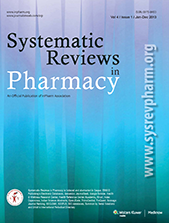THE EFFECT OF ROCKET FUEL ON THE MORPHOLOGICAL AND MORPHOMETRIC CHARACTERISTICS OF THE LUNGS OF RATS
Abstract
Abdullayeva B.A., Shalakhmetova T.M., Musanova G.A., Zharkova I.M., Askarbayeva K.A., Chunetova Zh.Zh., Kozhabayeva E..
It is important to study the impact of the Baikonur, Saryshagan, Azgyr space rocket test sites located on the territory of Kazakhstan, as well as Kapustin Yar, which is very close to the border, on the landscape, animal habitat and local health and determine the impact.
The areas in several areas where the detachable parts of the rocket launchers have fallen occupy a very large area [1]. The areas of collapse of the detachable parts of the rocket launchers belong to the category of "ecological disaster zone" according to their ecological status, and the areas affected by these parts belong to the "ecological crisis zone". The atmosphere, natural and anthropogenic landscapes are heavily polluted with all classes of harmful substances: asymmetric dimethylhydrazine (1,1-DMG), nitrosodymethylamine (NDMA), nitrogen tetraoxide, tetramethyltetrazen and other toxic substances [2-4].
Rocket complexes and rocket launches have a negative impact on all components of the environment and biological objects. There are reports that the number of animals living around the landfill is declining sharply, and some species are on the verge of extinction [1; 5]. Due to these circumstances, there is a need for regular environmental monitoring of these areas and morphological study of the structural components of the animals that inhabit these areas, arising from the current environmental situation in the country.
There are reports that heptyl or asymmetric dimethylhydrazine, one of the main components of rocket fuels and lubricants, causes various diseases when ingested by humans and animals due to an accident or other circumstances during a rocket launch [2-3; 5]. 1,1-DMG is converted into other compounds in the soil, plants, as well as in the body, which in turn appears to be toxic to the body in general or to a particular organ [4]. However, the toxic effects of 1,1-DMG and nitrosodimethylamine (NDMA), one of its derivatives, are poorly understood. There is reason to believe that heptyl, which enters the body through respiration, primarily damages the respiratory and gas exchange (respiratory) parts of the lungs.






